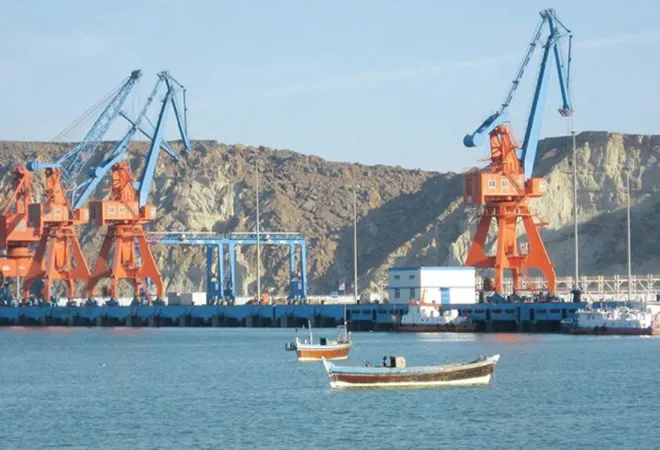In a move of great strategic significance to both India and the US, China seems poised to deploy its naval ships along with Pakistan navy to safeguard the strategic Gwadar port and trade routes under the $46 billion China-Pakistan Economic Corridor (CPEC).
If this move goes ahead as planned, it will be the logical culmination of a long drawn Chinese involvement in Pakistan, giving the Chinese navy a foothold in the first overseas location - the Indian Ocean and the Arabia Sea.
This should not be surprising given China's growing interest in the region and Pakistan's eagerness to counterbalance India's naval might.
< style="color: #163449;">Strategic
China has always been keen on gaining a strategic toehold in the Arabian Sea and Gwadar has been an attractive option.
Despite its problems, the Sino-Pak military collaboration too has been proceeding apace.
Despite some suggesting that Beijing's role in Gwadar would remain limited because of mounting troubles in Balochistan and its keenness to avoid raising hackles in New Delhi and Washington, China has now taken the plunge into the murky waters of Gwadar.
The Gwadar port, opened in 2007 with an initial $200 million in funding from China, had been a commercial failure because of Pakistan's inability to use it effectively.
But where in the past Beijing had repeatedly played down the significance of the Chinese role in Gwadar, many in the Pakistani establishment had gone to the extent of explicitly asking China to build a base at Gwadar.
China wants to overcome its 'Malacca Dilemma' as more than 80 per cent of its oil imports travel through the Straits of Hormuz.
Given its reluctance to rely on US naval power for unhindered access to energy, it has moved to build up its naval power at choke points along the sea routes from the Persian Gulf to the South China Sea.
The Gwadar port is central to this aim.
Situated about 400 km away from the Straits of Hormuz at the apex of the Arabian Sea, it is a key asset for China, especially now when Beijing and Islamabad are busy building the nearly 3,000-km-long economic corridor linking the Gwadar port with Xinjiang.
The Chinese-Pakistani relationship has now moved beyond the 'higher than Himalayas and sweeter than honey' phase.
Chinese strategists are openly talking of Pakistan as their nation's only real ally.
China's submarine operations in the Indian Ocean and the Chinese-Pakistani naval cooperation are challenging naval supremacy and have the potential to change the regional naval power balance.
China is also busy redefining the territorial status-quo in the region.
By deciding to construct major civil, energy and military infrastructure projects in the CPEC, which runs through Pakistan-occupied Kashmir (PoK) and the areas of Gilgit and Baltistan, China has accorded de facto 'legitimacy' to Pakistan's illegal occupation of these areas.
< style="color: #163449;">Weapons
China - the world's third-largest weapons exporter - has Pakistan as the top recipient of its arms.
By aiding Pakistan in setting up its nuclear and ballistic missile programmes, besides supplying conventional arms, Beijing had made sure that the Indian-Pakistani military balance is maintained.
China is considered a reliable ally that has always come to Pakistan's aid - so much so that Beijing has even tacitly supported Islamabad's strategy of using terror as a policy instrument against New Delhi.
With India ascending in the global hierarchy and strengthening its ties with the United States, China's need for Pakistan is likely to grow.
This has been evident in China's policies toward Pakistan on critical issues in South Asia.
A rising India makes Pakistan all the more important in China's strategy for the subcontinent.
It is highly unlikely that China will give up playing the Pakistan card vis-à-vis India anytime soon.
The Chinese-Pakistani partnership serves the interests of both partners by presenting India with a potential two-front theatre in the event of war with either country.
< style="color: #163449;">Presence
And for China, Pakistan is increasingly important to fend off a joint Indian-US challenge.
South Asia is emerging as an important new front in the power struggle between the US and China as well as India and China, and the region's importance is only likely to increase in the coming years.
China is taking the plunge in the waters of the Indian Ocean with its potential naval presence in Gwadar.
It will reshape the strategic map of the region in the coming years.
This commentary originally appeared in Mail Online India.
The views expressed above belong to the author(s). ORF research and analyses now available on Telegram! Click here to access our curated content — blogs, longforms and interviews.




 PREV
PREV


